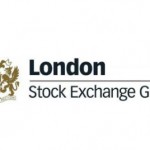Protect yourself from a negative outcome

 Something bad that overturns our calculations and expectations in life can happen any time. A driver insures his car to be covered in case of an accident. A landlord can also insure his house, his assets.
Something bad that overturns our calculations and expectations in life can happen any time. A driver insures his car to be covered in case of an accident. A landlord can also insure his house, his assets.
How can, an investor protect himself?
The unpredictable in financial markets is not unexpected in reality. Deterministically it will happen. We just do not know the time that it will happen and in what form.
But yet. There is a way to be insured. In financial markets language it is called hedging. Prudent investors, but also the traders, use hedging strategies to reduce their exposure to various risks. By hedging, risk is not eliminated completely, but the impact of an ugly incident may be occurred under certain conditions and be minimized.
How it is done
Along with the investment you already have and for which you do not feel so confident, a second investment it is added. Hedging happens when two positions have a negative correlation between them.
For example, we have bought the stock of the bank Wells Fargo (WFC). Simultaneously, we sell short the ETF that follows the banking industry. Because we believe on the one hand that the company will do well, but on the other hand we are not so optimistic for the entire industry.
What did we do in practice?
We bought a stock of one company while simultaneously selling an ETF of the sector that the company belongs to. Logically both will move in the same direction. It is unlikely for all the industry to rise and one of the largest banks to move on the opposite side.
In the case of a rise in prices. The stock rises 10% and the sector rises 6% respectively.
This means a gain of 10% from the WFC and a loss of 6% from the ETF. So our overall gain is 10% – 6% = 4%
In the opposite case that our expectations for a rising share turn wrong, there is a drop of 10% for the WFC, and a 6% drop for the sector.
This means a loss of 10% from WFC and a gain of 6% from the ETF. So the total loss is 10% – 6% = 4%
As a result, if our prediction turns right, there is a gain but, less than what we would have gained if we had not hedged the position.
This is the “compensation”
But in case of a wrong prediction, our loss is small. The risk is much less than taking a position to the share.
There are of course two other cases, rare though, but in the stock market anything can happen.
The first is that the share will rise and for our good luck, the sector will drop. This means an earning from both positions. At the same time.
Extremely unlucky will be the case when the sector rises, for instance to lose from the ETF, while at the same time the stock drops. Which means losing from both positions.
Hedges of foreign exchange risk
When investing in a stocks that are in a different currency from our, there is a risk that the foreign currency loses its value against ours, thus the profit of the investment will occur with losses.
For example, we invest in the US stock market and convert our money in dollars. After some time, we are pleased to have 50% gain and thus decide to withdraw our money.
If in the period between the deposit until the profit there is an appreciation of 20% of the euro against the US currency, this means a gain of only 30% in euro (50% gain in dollars – 20% is the overvaluation).
However, if we’re lucky and the euro devalues against the dollar by 20%, then our profit is bigger. It is 70% (50% gains in dollars + 20% devaluation).
A prudent investor would hedged such a trade. Hedging has to do essentially with taking the opposite position in the currency. In this case he would have purchased the EUR / USD (basically selling US dollar) in the same amount with the amount he had converted into dollars.
Find more: Contributing Authors





























